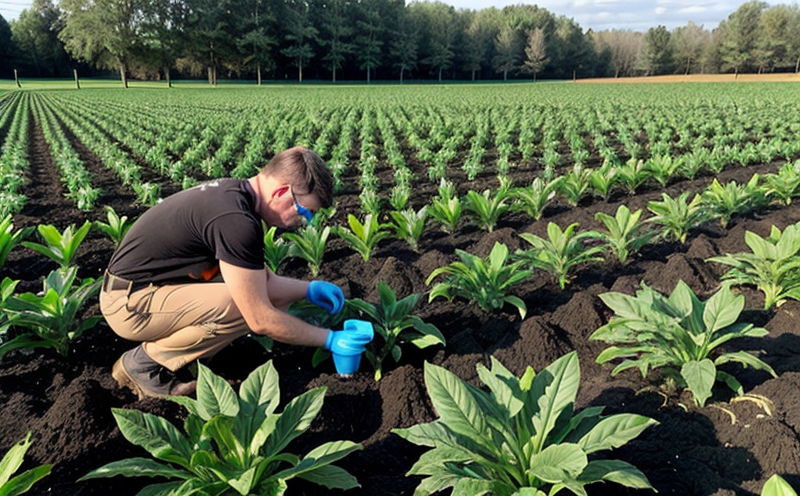Copper Content Testing in Fertilizers
The testing of copper content in fertilizers is essential to ensure that agricultural products meet quality standards and regulatory requirements. Copper plays a critical role in plant health, but excessive levels can be harmful, leading to reduced yields or even toxicity.
Our service involves the precise measurement of copper content using state-of-the-art analytical techniques such as Inductively Coupled Plasma Optical Emission Spectroscopy (ICPOES) and Inductively Coupled Plasma Mass Spectrometry (ICP-MS). These methods provide accurate, reliable, and repeatable results.
Specimen preparation is a critical step. Samples are typically prepared by dissolving the fertilizer in an appropriate solvent, such as nitric acid, to ensure complete solubility. The solution must be filtered and diluted to achieve optimal concentrations for analysis. This process ensures that the test results accurately reflect the copper content in the fertilizer.
For a comprehensive understanding of our service, consider the following real-world parameters:
- Type of Fertilizers: We can analyze various types including nitrogen-based fertilizers, phosphate fertilizers, and compound fertilizers.
- Samples Size: Samples are typically in grams or milliliters depending on the type of fertilizer being tested.
- Test Frequency: Testing frequency depends on regulatory requirements and quality control needs. Some clients require daily tests, while others test less frequently based on batch size.
The applied standards for copper content testing in fertilizers are governed by several international standards including ISO 17294:2013 (Method for determination of copper content in nitrogenous and phosphate fertilizers) and ASTM D856-14 (Standard test method for determining the copper content of petroleum products).
| Applied Standards | Description |
|---|---|
| ISO 17294:2013 | Method for determination of copper content in nitrogenous and phosphate fertilizers. |
| ASTM D856-14 | Standard test method for determining the copper content of petroleum products, which can also be relevant for certain fertilizer types. |
Quality and Reliability Assurance
To ensure high-quality and reliable testing results, we adhere to strict quality control measures. Our team follows standardized operating procedures (SOPs) that are reviewed and updated regularly. We maintain calibration certificates for all our instruments and perform regular audits.
- Instrument Calibration: Instruments are calibrated using certified reference materials before each testing cycle.
- Data Validation: Data is validated against known standards to ensure accuracy.
Environmental and Sustainability Contributions
Accurate copper content analysis in fertilizers not only benefits the agricultural sector but also has broader environmental implications. By ensuring that copper levels are within acceptable limits, we help reduce the risk of soil contamination and subsequent harm to ecosystems. Properly managed copper content can enhance crop yields while minimizing environmental impact.





